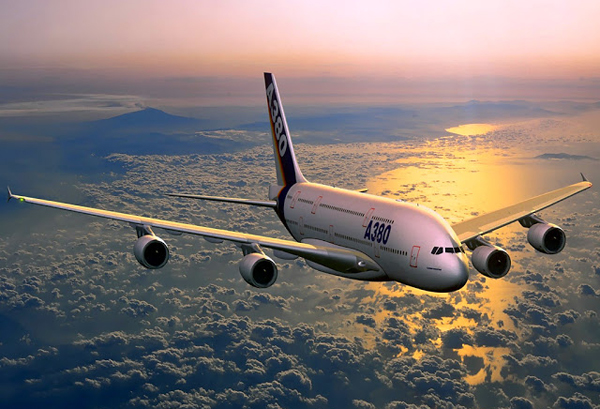ATM teams from Airbus and EADS to participate in seven SESAR JU Integrated Flight Trials

Paving the way for reduced emissions and optimising airspace capacity throughout the North Atlantic and Continental Europe
Airbus and its air traffic management (ATM) subsidiaries – Airbus ProSky, Quovadis and Metron Aviation – together with the EADS division Cassidian, have all been selected to participate in the upcoming SESAR Joint Undertaking (SESAR JU) Integrated Flight Trials. The SESAR JU programme involves a large number of stakeholders in key locations across the North Atlantic and Continental Europe.
The seven integrated flight trials involving these Airbus/EADS teams will commence in early 2013 and conclude by the end of 2014. Together they form part of the SESAR JU’s on-going ‘Atlantic Interoperability initiative to Reduce Emissions III (AIRE III) SESAR Integrated Flight Trials.’ AIRE is the joint European Commission and Federal Aviation Administration (FAA) programme which aims to reduce CO2 emissions and accelerate the uptake of ATM best practices and to capitalise on today’s aircraft technology. These integrated flight trials will validate technology and procedures to deliver innovative ATM solutions which will be immediately operational, and allow stakeholders to take direct advantage of the benefits.
Eric Stefanello, CEO of Airbus ProSky commented: “Airbus, EADS and our ATM subsidiaries are pleased to support the coordination between airlines, airports and Air Navigation Service Providers (ANSPs) in these upcoming SESAR JU flight trials.” He adds: “By contributing our teams’ collective expertise in air transport and ATM, the trials will help not only to pave the way for further reducing emissions, but also to optimize capacity and demand throughout the North Atlantic and Continental European airspace.”
The seven SESAR JU Integrated Flight Trials projects in which Airbus/EADS teams are taking part, comprise:
• “ATC Full Datalink” (AFD) will demonstrate how commercial flights can be conducted seamlessly through controlled airspace by making extensive use of FANS B+ equipped aircraft allowing voiceless Controller-Pilot-Data-Link-Communications (CPDLC) for routine operations like clearances, hand over and routing instructions. The AFD trials extend the use of CPDLC even below Flight Level 285, which is currently the limit in some European Upper Airspace. AFD is led by ENAV, with consortium members Airbus ProSky, NATS, easyJet, Air France, Boeing, SELEX-SI and SITA. Subcontractors include Airbus.
• “New Bridge” is a project designed to sequence air traffic earlier than current operations. The operation is to extend on current airline practices to schedule any aircraft type movements and to provide extended coordination between airlines operation centres and related air traffic control sectors, once movements have actually departed. New Bridge will increase flight efficiency through improved management of sector loads and arrival traffic sequencing by using the maximum time horizon available for the business trajectory. In particular New Bridge will consider the exchange of 4D trajectory information for Unmanned Aerial Vehicles (UAV) with a Civil Air Traffic Centre.
New Bridge is led by LFV, with consortium members Airbus ProSky, Swedavia, Estonian ANS, SAS, Novair, Estonian Air, Malmö Aviation, Rockwell Collins France, NLR and Egis Avia. Subcontractors include Airbus and the EADS division, Cassidian.
• “Fair Stream” will pave the way for the use of ‘target-time-of-arrival’ instead of ‘calculated-take-off-time’ as a capacity/demand balancing measure coupled with traffic sequencing and ‘required-time-of-arrival’ exchanges. The evaluation and validation will be performed on commercial flights arriving at Paris, Munich and Zurich during time periods when traffic load exceeds capacity and the delays are significant. Led by DSNA, Fair Stream’s consortium members include Airbus ProSky, DFS, Skyguide (Functional Airspace Block Europe Central [FABEC] members), Air France, Régional, Delta Air Lines, Lufthansa and SWISS. Subcontractors include Airbus.
• “Topflight” will develop new procedures designed to allow transatlantic flights from London Heathrow to follow a trajectory as close as possible to their ‘reference business trajectories’ while remaining de-conflicted and meeting their Arrival Manager sequenced times of arrival. Led by the UK’s NATS, Topflight includes consortium members NAV Canada and British Airways. Subcontractors include Airbus ProSky, Airbus and Quovadis.
• “CANARIAS” (CO2 and Noise Approach Reduction for International Aviation Sustainability) will take full advantage of RNP capabilities for a large variety of aircraft to demonstrate reduction of track miles, fuel consumption and CO2 emissions through the implementation of Required Navigation Performance with Authorization Required (RNP-AR) approaches at Lanzarote and La Palma airports. The project is led by Quovadis, with consortium members AENA, easyJet, Thomas Cook Airlines and Air Berlin.
• “AMBER” (Arrival Modernisation for Better Efficiency in Riga) will demonstrate green flights using the Bombardier Q400: a first in Europe with a regional aircraft flying RNP-AR procedures. The Vilnius to Riga and the Warsaw to Riga routes will be used to quantify the reduction of the CO2 emissions when comparing conventional navigation with direct routings applying Performance Based Navigation (PBN) procedures in the terminal airspace. Amber is led by Air Baltic, with consortium members Quovadis and LGS.
• “DFlex” will demonstrate enhanced flexibility to the C-PDS (Collaborative Pre-Departure Sequence) process currently in operation at Paris Charles De Gaulle Airport, by allowing flight reordering based on airline’s business requirements. Live trials will be performed to validate slot substitution. DFlex is led by Air France, with consortium members Régional, Delta Air Lines, FedEx, Aéroports de Paris, DSNA and Airbus ProSky. Subcontractors include Metron Aviation.
Airbus is the world’s leading aircraft manufacturer offering the most modern, innovative and efficient family of passenger airliners on the market, ranging in capacity from 100 to more than 500 seats. Airbus has design and manufacturing facilities in France, Germany, the UK, and Spain as well as subsidiaries in the US, China, Japan and in the Middle East. Headquartered in Toulouse, France, Airbus is an EADS company.
